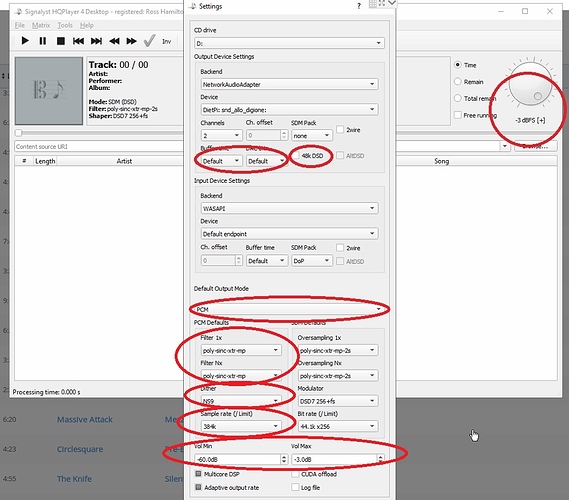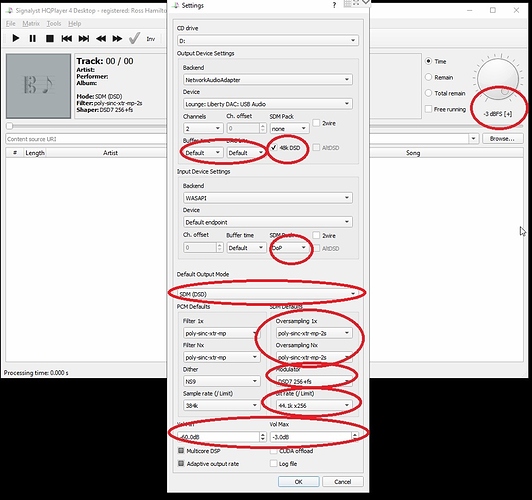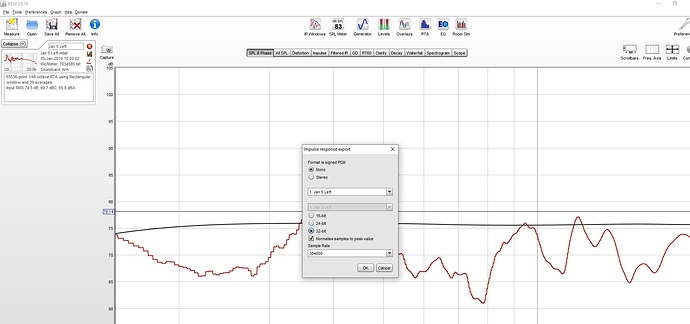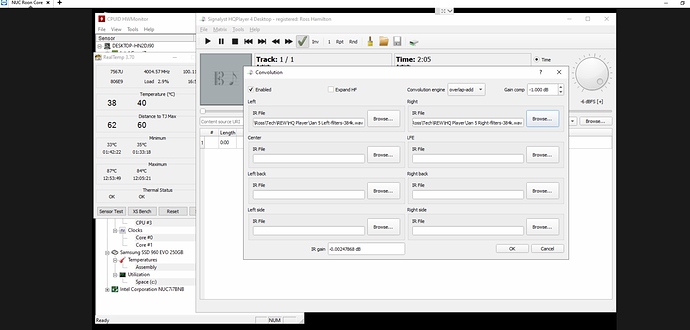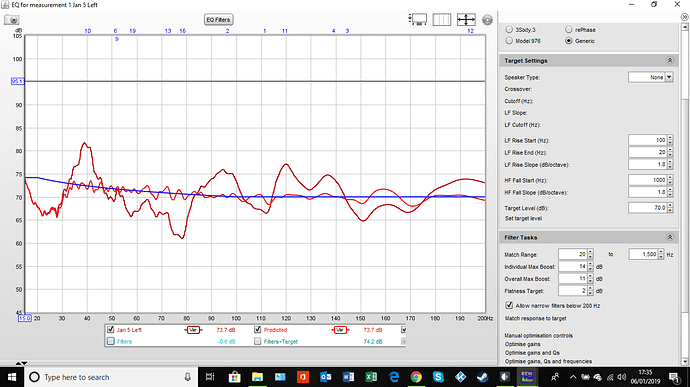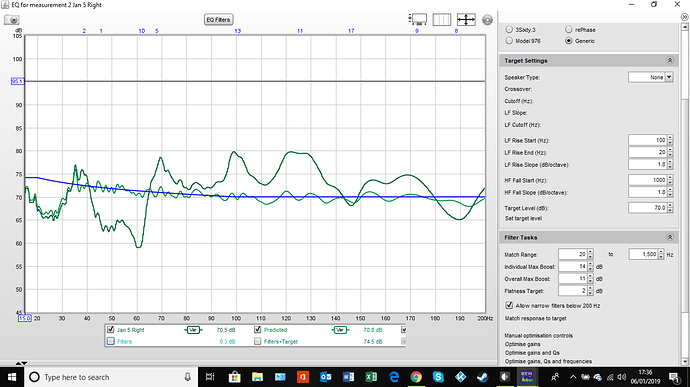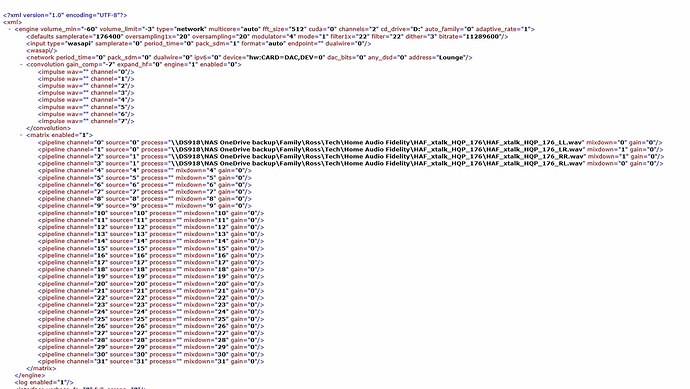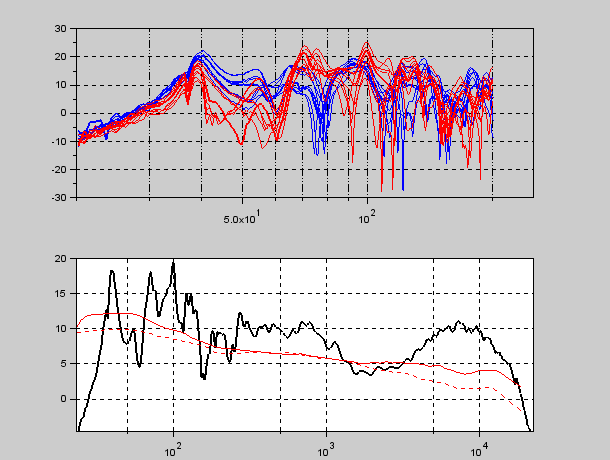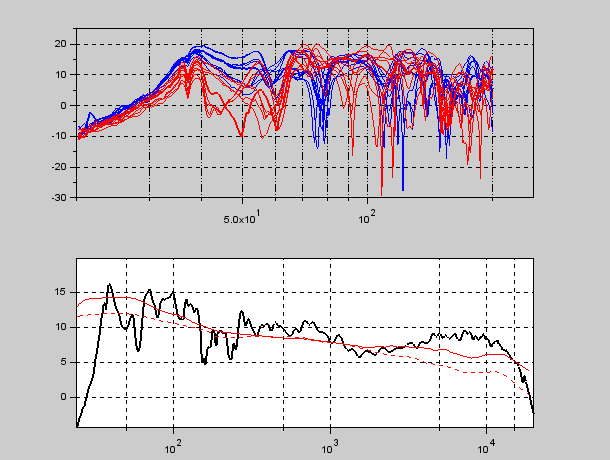Hello all!
I have recently utilised HQ Player trial and I have decided to purchase the full version (4). I have read the manual but I do have a few further questions…
I have set up Team Viewer (as suggested in my original thread) so I can navigate to my Roon Core which is running on a headless Windows 10 NUC, which is also running HQ Player, I then feed various endpoints around the house. Practically speaking though I will only want to run HQ player on two end points, in my office and lounge. I know I can’t run them both together and I understand there is no profile functionality in HQ Player which I knew before purchasing. However I would like to understand a bit better the settings for each endpoint so I can move between the two fairly quickly.
Just to be clear there is no multichannel, just stereo.
Office endpoint
Windows 10 NUC 7I7BNH (dual core) – Ethernet cable – Netgear switch – Patch-box – Ethernet cable – Netgear switch – Allo Digione streamer – coaxial cable into Arcam irDAC-II – Adam F5 active speakers.
Plan – to upscale all content to PCM, the limit of the connection using spdif
Office endpoint questions
- -3dBFS – I understood this was a good place to start, however I have noticed the dial turn red, so I assume I need to turn down. I have gone to -4 then -5, and I watching if it has any further effect.
- Buffer time and DAC bits – I assume I should leave on default, any other thoughts, in what scenario should I adjust?
- Default Output Mode – I intend to switch to PCM for this endpoint as I cannot get DSD to work outside of a direct Windows environment, or it better to leave on source?
- Filter 1x and Filter Nx – what is the difference, I could not see an explanation in the manual, how should I use the two?
- Poly-sinc-xtr – mp filters – I know the filters are subjective, however I mostly listen to guitar based or electronic music so I felt this was a good choice, any other perspectives?
- Other – NS9 – I am aiming to upsample to the limit of spdif connection, so 192kHz, so this seemed like a good setting, any other thoughts?
- Sample rate – I have set this to the theoretical limit of the DAC currently, so 384kHZ but practically I can’t get above 192kHZ, which is preferable?
- Vol Min and Vol Max – These have been suggested previously, do these still look acceptable?
Lounge endpoint
Windows 10 NUC 7I7BNH (dual core) – Ethernet cable – Netgear switch – Patch-box – Ethernet cable – Netgear switch – Allo USBridge streamer – USB cable into Mytek Libery DAC – Musical Fidelity M3i amplifier – Monitor Audio Bronze 5 speakers.
Plan – to upscale all content to DSD 256, the limit of the DAC.
Lounge endpoint questions
- -3dBFS – as above
- Buffer time and DAC bits as above
- 48k – I couldn’t see anything in the manual, when should I set this?
- SDM Pack – should this be set to DoP or none?
- Default Output Mode – Given the aim to upscale to DSD, should I just set like this?
- Oversampling 1x and Oversampling Nx – what is the difference, I could not see an explanation in the manual, how should I use the two?
- Poly-sinc-xtr – mp -2s filters – I know the filters are subjective, however I mostly listen to guitar based or electronic music so I felt this was a good choice, any other perspectives? I tried without the -2s and the music was breaking up, I assume it is too much for my server?
- Modulator – DSD7 256+fs Given my aim for DSD 256, this settings seemed appropriate, should I consider others?
- Bit rate – I have set to 44 x256 – this seemed reasonable, do I need to adjust?
- Vol Min and Vol Max – as above
A few extra questions
- Convolution – I have used REW recently and measured my lounge, and created a set of WAV filters that I have zipped up and loaded into Roon. I followed the guide created by Magnus on this forum. It looks like for the HQ Player’s convolution engine I can only load up a left or right filter say for 44.1 kHZ at 16 bit, the trouble is a good deal of the Qobuz content (and my own content) is above this rate e.g. 96kHz at 24 bit for example, is there a way to add multiple files?
- DSD source settings – I only have a few DSD albums, do I need to touch this setting?
Thank you for any input or advice.
